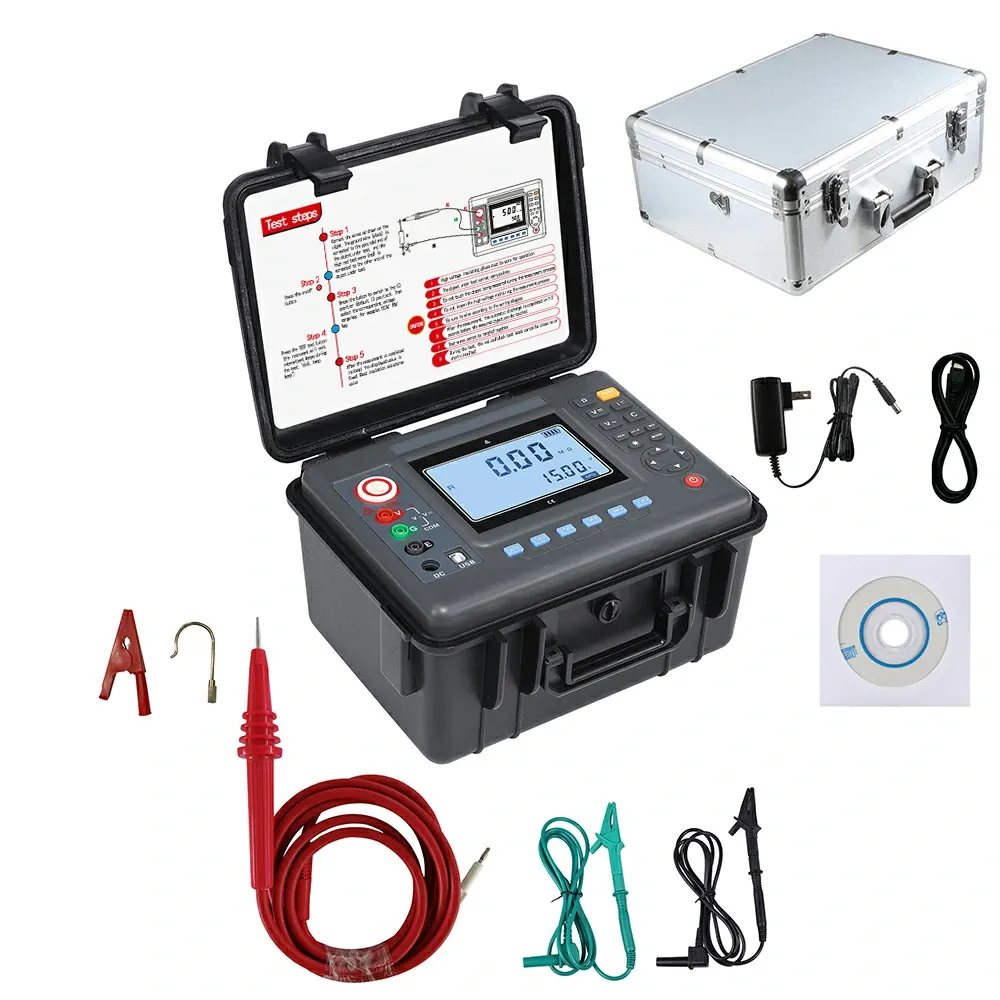 English
English


insulation resistance measurement device
Understanding Insulation Resistance Measurement Devices
Insulation resistance measurement devices play a crucial role in ensuring the safety and efficiency of electrical systems. These devices assess the integrity of insulation surrounding electrical conductors and components, which is essential to prevent electrical faults, reduce the risk of shock, and prolong the lifespan of electrical equipment.
What is Insulation Resistance?
Insulation resistance refers to the resistance offered by the insulating materials surrounding electrical conductors. High insulation resistance implies that very little current can leak through the insulation, which indicates that the insulation is performing effectively. Conversely, low insulation resistance can signal potential faults, such as deterioration, moisture ingress, or physical damage to the insulation. These defects can lead to electrical shorts, equipment failures, and, in worst-case scenarios, fire hazards.
Types of Insulation Resistance Measurement Devices
There are various types of insulation resistance measurement devices, catering to different applications and requirements. The most common type is the megohmmeter, often simply referred to as a megger. This device applies a high voltage (typically between 250V to 1000V) to the insulation under test, measuring the resulting leakage current and calculating the insulation resistance. The measurements are expressed in megohms (MΩ), with higher values indicating better insulation quality.
Another type of device is the insulation resistance tester, which is designed for more general purposes. These testers are user-friendly and come with features such as digital displays and automated testing functions. Advanced models may also provide the capability to perform time-resistance tests, allowing users to monitor how insulation resistance changes over time under a constant voltage, which gives insights into the aging and condition of the insulation.
Applications of Insulation Resistance Measurement Devices
insulation resistance measurement device

These devices are integral in several sectors, including manufacturing, utility maintenance, and construction. In industrial settings, regular testing of motors, transformers, and cables ensures that equipment operates safely and efficiently, reducing downtime and maintenance costs. In construction, verifying insulation resistance in newly installed wiring systems is essential to ensure compliance with safety standards and to prevent future issues.
Moreover, these devices are valuable in troubleshooting. When electrical equipment malfunctions, measuring insulation resistance can help identify the cause, whether it be insulation breakdown or other electrical faults. This proactive approach enhances the reliability of electrical systems and safety for personnel and equipment alike.
Best Practices for Using Insulation Resistance Measurement Devices
When using insulation resistance measurement devices, it’s important to follow best practices to obtain accurate results. Operators should ensure that the equipment is properly calibrated before testing. It's also advisable to disconnect the equipment being tested from the power source and ensure that capacitive devices are fully discharged to prevent misleading readings.
Furthermore, recording the measurements over time can help in establishing trends that indicate insulation degradation. Such data can be invaluable for planning maintenance schedules and prioritizing repairs, ultimately contributing to a more reliable and safe electrical infrastructure.
Conclusion
Insulation resistance measurement devices are indispensable tools in maintaining the safety and functionality of electrical systems. Their capability to detect and quantify insulation faults not only helps in preventing accidents but also enhances the longevity of electrical equipment. As technology progresses, these devices are becoming increasingly sophisticated, providing greater efficiency and accuracy in insulation testing. Adopting regular testing practices can significantly contribute to the overall health of an electrical system, making insulation resistance measurement an essential aspect of electrical maintenance and safety protocols.
-
Differences between open cup flash point tester and closed cup flash point testerNewsOct.31,2024
-
The Reliable Load Tap ChangerNewsOct.23,2024
-
The Essential Guide to Hipot TestersNewsOct.23,2024
-
The Digital Insulation TesterNewsOct.23,2024
-
The Best Earth Loop Impedance Tester for SaleNewsOct.23,2024
-
Tan Delta Tester--The Essential Tool for Electrical Insulation TestingNewsOct.23,2024





